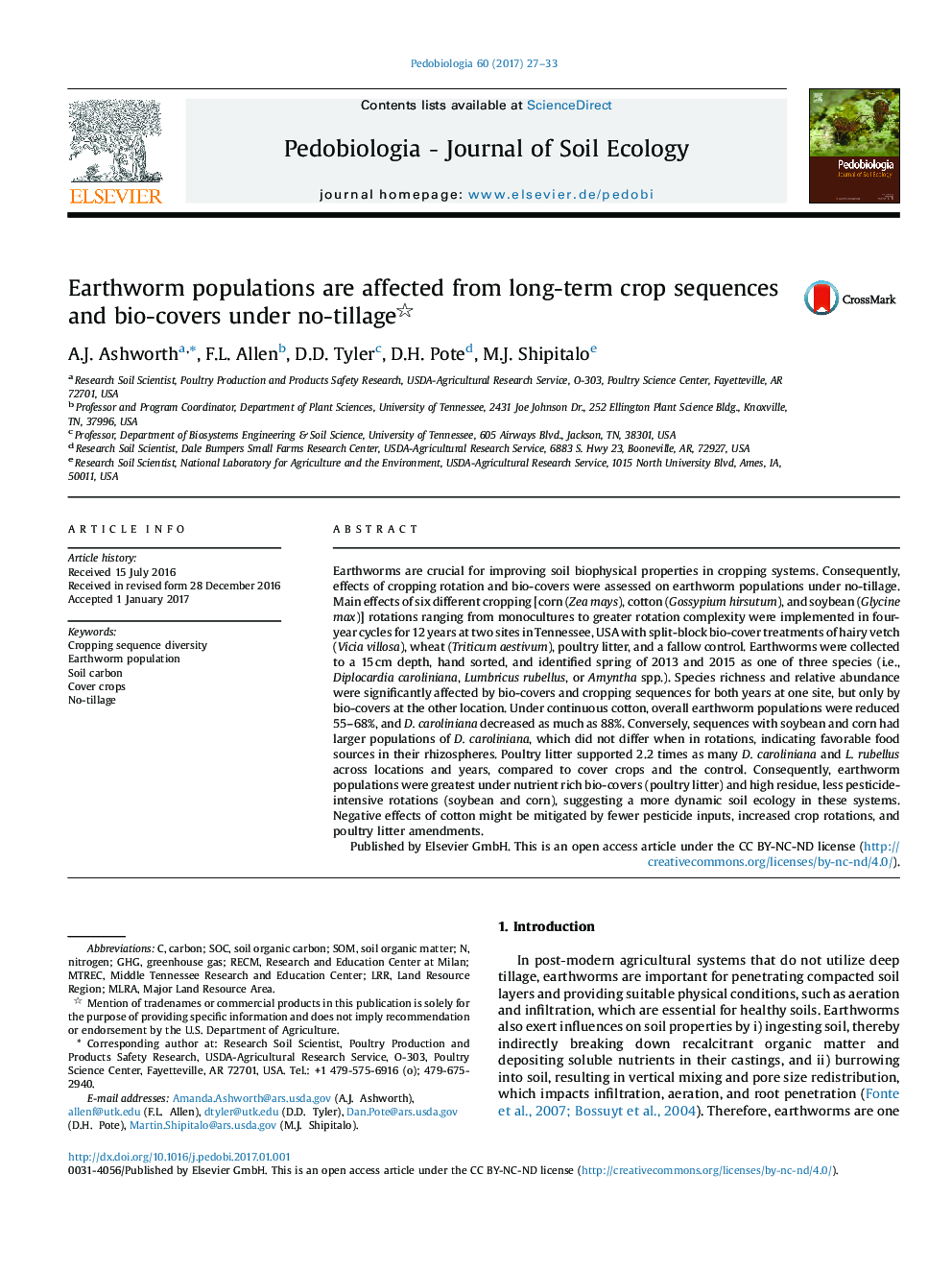| Article ID | Journal | Published Year | Pages | File Type |
|---|---|---|---|---|
| 5518761 | Pedobiologia | 2017 | 7 Pages |
â¢Earthworms with ranges in origin and foraging habits occur post long-term no-tillage.â¢Continuous cotton supported the lowest frequencies of oligochaetes.â¢Crop rotations of soybeans and corn provided more favorable residues for earthworms.â¢Poultry litter is a favored food source of D. caroliniana and L. rubellus species.
Earthworms are crucial for improving soil biophysical properties in cropping systems. Consequently, effects of cropping rotation and bio-covers were assessed on earthworm populations under no-tillage. Main effects of six different cropping [corn (Zea mays), cotton (Gossypium hirsutum), and soybean (Glycine max)] rotations ranging from monocultures to greater rotation complexity were implemented in four-year cycles for 12 years at two sites in Tennessee, USA with split-block bio-cover treatments of hairy vetch (Vicia villosa), wheat (Triticum aestivum), poultry litter, and a fallow control. Earthworms were collected to a 15Â cm depth, hand sorted, and identified spring of 2013 and 2015 as one of three species (i.e., Diplocardia caroliniana, Lumbricus rubellus, or Amyntha spp.). Species richness and relative abundance were significantly affected by bio-covers and cropping sequences for both years at one site, but only by bio-covers at the other location. Under continuous cotton, overall earthworm populations were reduced 55-68%, and D. caroliniana decreased as much as 88%. Conversely, sequences with soybean and corn had larger populations of D. caroliniana, which did not differ when in rotations, indicating favorable food sources in their rhizospheres. Poultry litter supported 2.2 times as many D. caroliniana and L. rubellus across locations and years, compared to cover crops and the control. Consequently, earthworm populations were greatest under nutrient rich bio-covers (poultry litter) and high residue, less pesticide-intensive rotations (soybean and corn), suggesting a more dynamic soil ecology in these systems. Negative effects of cotton might be mitigated by fewer pesticide inputs, increased crop rotations, and poultry litter amendments.
